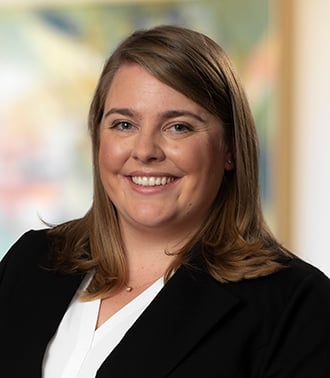Families First Coronavirus Response Act Signed Into Law by President Trump, Will Take Effect No Later Than April 2, 2020
To help our clients navigate the coronavirus (COVID-19) crisis, Arnold & Porter has established a Coronavirus Task Force covering a wide range of issues and challenges. Subscribe to our "Coronavirus (COVID-19)" mailing list to receive our latest client Advisories and register for upcoming webinars.
Updated March 19, 2020
The Families First Coronavirus Response Act (H.R. 6201), which is summarized below, has now been passed by Congress and signed by the President. It will take effect on April 2, 2020, unless Congress or the Secretary of Labor announce that it is to take effect sooner (the FMLA and Emergency Paid Sick Leave provisions of the Act both say that they shall take effect "not later than 15 days after the date of enactment," which is April 2).
* * * * *
Introduction
On March 14, 2020, the United States House of Representatives passed the Families First Coronavirus Response Act (H.R. 6201). On March 16, the House passed a technical corrections bill to address what were described as drafting errors that negatively affect small businesses. The bill provides two different ways to provide paid benefits to employees affected by the coronavirus. The first involves amendments to the existing Family & Medical Leave Act (FMLA). The second provides a new emergency paid sick leave. Both apply only to private-sector employers with fewer than 500 employees and governmental employers, and both provisions expire on December 31, 2020. The bill still needs to be approved by the Senate and signed by the President to become law and, of course, there may be additional changes.
Below is a summary of the key provisions of the bill with respect to these two types of paid leave for employees affected by the coronavirus.
FMLA Amendment
- Eligible employees (defined broadly as those employed for 30 days or more rather than the normal requirements for other types of FMLA leave) are entitled to take up to 12 weeks of job-protected leave to care for a child younger than 18 whose school is closed or whose child care provider is unavailable.
- The FMLA leave is unpaid for the first ten days. Employers must allow the employee to substitute paid time off, but may not require the employee to do so. Following the 10-day period, employees are eligible for paid leave from their employers at least two-thirds of their normal pay rate.
- The benefit is capped at $200 per day and $10,000 in aggregate.
- The new bill allows employers of health care providers and emergency responders to exclude those employees from the new extended FMLA leave.
- Employers with fewer than 50 employees in the current or previous calendar year are shielded from liability for damages in a civil action for violating the new extended FMLA leave provision.
Emergency Paid Sick Leave
- Employers will be required to provide paid sick leave to all employees for the following coronavirus-related reasons:
- Federal, State, or local quarantine;
- self-quarantine at the advice of a health care provider;
- obtaining a medical diagnosis if experiencing symptoms;
- caring for a sick individual who is subject to Federal, State, or local quarantine or is self-quarantined at the advice of a health care provider;
- caring for a child whose school or child care facility has been closed or whose childcare provider is unavailable; and
- experiencing any other "substantially similar" condition specified by the Secretary of Health and Human Services.
- Full-time employees will be entitled to 80 hours of paid sick leave at either:
- their regular rate of pay for their own coronavirus-related quarantine or symptoms; or
- two-thirds of the regular rate for caring for a sick family member, caring for a child whose school or child care facility has been closed or whose childcare provider is unavailable, or experiencing any other "substantially similar" condition.
- In all cases pay must meet federal, state and local minimum wage.
- Part-time employees will be entitled to paid sick leave in the amount equal to the average amount of hours they work over a two-week period.
- Paid leave is capped at:
- $511 per day ($5,100 in the aggregate) for employees who are themselves:
- subject to a Federal, State, or local quarantine or isolation order,
- advised to self-quarantine by a health care provider, or
- experiencing symptoms of coronavirus.
- $200 per day ($2,000 in the aggregate) for employees who are:
- caring for an individual who is subject to a Federal, State, or local quarantine or isolation order or who is self-quarantined,
- caring for a child whose school or place of care is closed due to coronavirus, or
- experiencing any other "substantially similar condition" specified by the Secretary of Health and Human Services
- $511 per day ($5,100 in the aggregate) for employees who are themselves:
- The bill states that it "is not intended to in any way diminish the rights or benefits that an employee is entitled to" under any existing employer paid sick leave policy.
- The bill allows employers of health care providers and emergency responders to exclude those employees from application of the emergency paid leave provision.
- The Secretary of Labor may issue regulations excluding health care providers or emergency responders and/or exempting small businesses with fewer than 50 employees from the paid sick leave requirements.
Tax Credits for Employers
- The bill provides a credit against an employer's payroll tax for each calendar quarter in an amount equal to 100 percent of qualified family and sick leave wages. If the credit exceeds the employer’s payroll tax liability for the quarter, the difference will be refunded to the employer.
- For FMLA leave, the amount of qualified family leave taken into account will not exceed:
- $200 per day, and
- $10,000 in aggregate across all calendar quarters.
- For Emergency Paid Leave, the amount of qualified sick leave wages will not exceed:
- $511 per day ($5,100 in the aggregate) for employees who are themselves subject to a quarantine or isolation order, self-quarantined, or experiencing symptoms of coronavirus;
- $200 per day ($2,000 in the aggregate) for employees who are caring for an individual who is subject to a quarantine or isolation order or who is self-quarantined, caring for a child whose school or place of care is closed due to coronavirus, or experiencing any other "substantially similar condition" specified by the Secretary of Health and Human Services; or
- no more than 10 days will be taken into account for credits for paid emergency sick leave.
- The bill allows certain qualified health plan expenses that are allocable to qualified sick leave wages or qualified family leave wages to qualify for the tax credits.
- Qualified health plan expenses are amounts paid or incurred by an employer to provide and maintain a group health plan that are excluded from employees' income.
© Arnold & Porter Kaye Scholer LLP 2020 All Rights Reserved. This Advisory is intended to be a general summary of the law and does not constitute legal advice. You should consult with counsel to determine applicable legal requirements in a specific fact situation.




